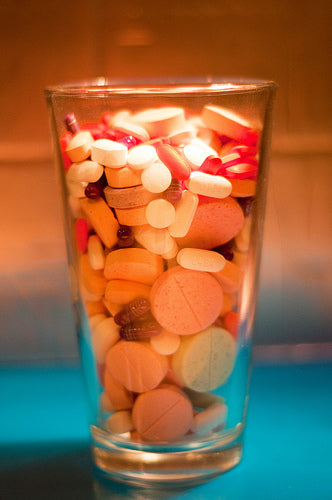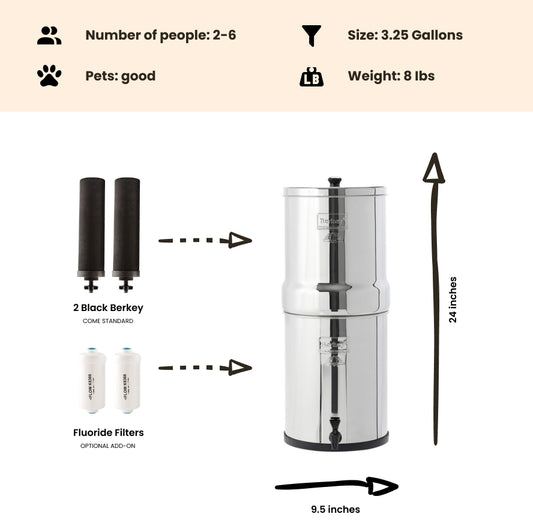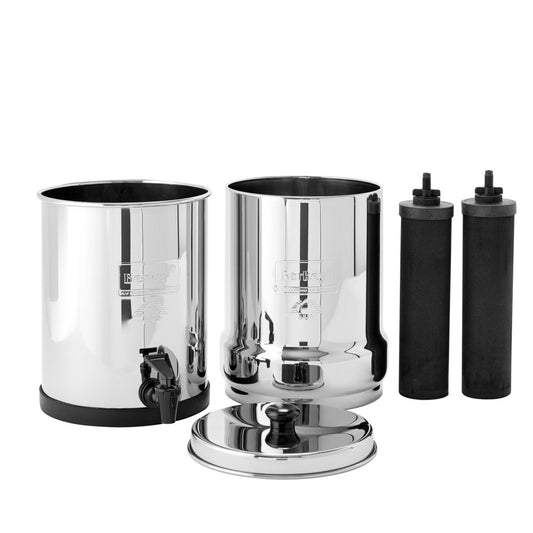
Emerging Pollutants: Drugs in Drinking Water
By Dan DeBaunShare
Contamination of drinking water by toxic pollutants, is a major concern. The US Environmental Protection Agency (EPA) has an exceedingly long list of both primary and secondary drinking water contaminants that it regulates. However, a new form of pollution, collective referred to as 'emerging pollutants', which consist of contaminants that stem from pharmaceuticals and personal care products (PPCPs), are rapidly becoming more of a concern.
Most people take drugs or medication at some point in their life, and all of us use personal care products to a greater or lesser degree every day. Drugs and medication fight off bacteria and viruses that cause us to become ill, or reduce inflammation and relieve pain. But these drugs don't simply disappear once they are swallowed. Traces of drugs that are not metabolized by the body are excreted, where they enter the sewer and freshwater systems. However, most sewage treatment facilities are not adequately equipped to be able to remove these notions and potions from the treated water before it leaves the treatment plant. Consequently, these drugs flow from the wastewater treatment plants into surrounding freshwater systems where they not only wreak havoc with wildlife, but can be potentially harmful to humans who drink the water.
How Widespread is the Problem?
According to the EPA, Pharmaceuticals and Personal Care Products (PPCPs) can be defined as all personal hygiene, health, and beauty products, as well as veterinary products used on pets and livestock for health or growth enhancement. These products include prescription drugs, over-the-counter medicines, growth hormones (steroids), sex hormones (contraceptives), antibiotics, anti-inflammatories, fragrances, toiletries, and cosmetics. As this list covers a broad scope of over the counter drugs, it stands to reason that drugs can enter our freshwater systems from a wide range of sources that include:
- Bathing, showering, and washing where soaps, shampoo, and fragrant oils, creams and lotions are washed down the drain.
- Drugs may be released into the sewer when they are excreted or if expired medication is flushed down the toilet.
- Sunscreen and body lotion can wash off into the water when a person swims in rivers or lakes.
- Hormones used during agriculture or drugs used on domestic animals or livestock can be released with the animals waste to contaminate soil and groundwater systems through leaching and freshwater rivers and lakes through runoff.
- Drugs disposed in hospital waste or in the waste of pharmaceutical manufacturing companies can find its way into sewer or freshwater systems.
According to the EPA, ''PPCPs are found in any water body influenced by raw or treated sewage, including rivers, streams, ground water, coastal marine environments, and many drinking water sources.'' They further state that ''PPCPs have been identified in most places sampled.''
Effects of Pharmaceuticals on Wildlife
Drugs and pharmaceuticals, such as contraceptives, can drastically affect fish and other aquatic wildlife. Research studies have revealed that hormones used in contraceptive pills can affect egg and sperm production in fish, and can even cause male fish to become feminized to a point where they start producing eggs instead of sperm. If this scenario persists for any length of time it will lead to a rapid decline in affected fish populations. Sex abnormalities have also been noted in frogs. This begs the question: can this have a similar affect on humans who drink water contaminated with these hormones and drugs?
Drugs, hormones, and other pharmaceuticals have been specifically designed to affect living organisms. It therefore stands to reason that these products will have an effect on all living organisms when they are involuntarily released into natural systems. This is particularly worrisome because up until recently nobody has thought to monitor the extent or effect of these drugs in our waterways.
Unfortunately our wildlife is not in a position to filter water to remove toxins which they are continually exposed to. Ultimately, this problem urgently needs further research and measures put into place to reduce the risks to both our wildlife and our own health.
The Black Berkey Filters
You may have noticed that there are some very popular water filter companies that are starting to advertise that their filters remove pharmaceuticals from the drinking water. These filters are made with much lower quality filter ingredients, so a logical train of thought would be that if their filters remove them, and if the filtration media used is similar, then the black berkeys would be effective also. However, many of these larger companies are not providing test results to back up these claims, in addition to the fact that slight variations in filter media types can produce varying filtration results. Thus, at this point we reserve our positive endorsement for both these companies making the claims without testing results and our own black berkeys (until we have tests in hand), and rather provide this information so that the consumer can make the most informed decision possible. The reality is that this is a relatively new public concern and the water filtration industry as a whole needs to catch up quickly.
10/25/14 Update: The black berkeys have now undergone testing for pharmaceuticals and they removed these contaminants at above 99.9%
-
Regular price $234.00 USDRegular priceUnit price / per
-
Regular price $327.00 USDRegular priceUnit price / per
-
Regular price From $367.00 USDRegular priceUnit price / per
-
Regular price From $408.00 USDRegular priceUnit price / per
-
Regular price From $451.00 USDRegular priceUnit price / per
-
Regular price From $478.00 USDRegular priceUnit price / per
-
Regular price $332.50 USDRegular priceUnit price / per
$350.00 USDSale price $332.50 USDSale

Dan DeBaun
Dan DeBaun is the owner and operator of Big Berkey Water Filters. Prior to Berkey, Dan was an asset manager for a major telecommunications company. He graduated from Rutgers with an undergraduate degree in industrial engineering, followed by an MBA in finance from Rutgers as well. Dan enjoys biohacking, exercising, meditation, beach life, and spending time with family and friends.
~ The Owner of Big Berkey Water Filters

















Yup